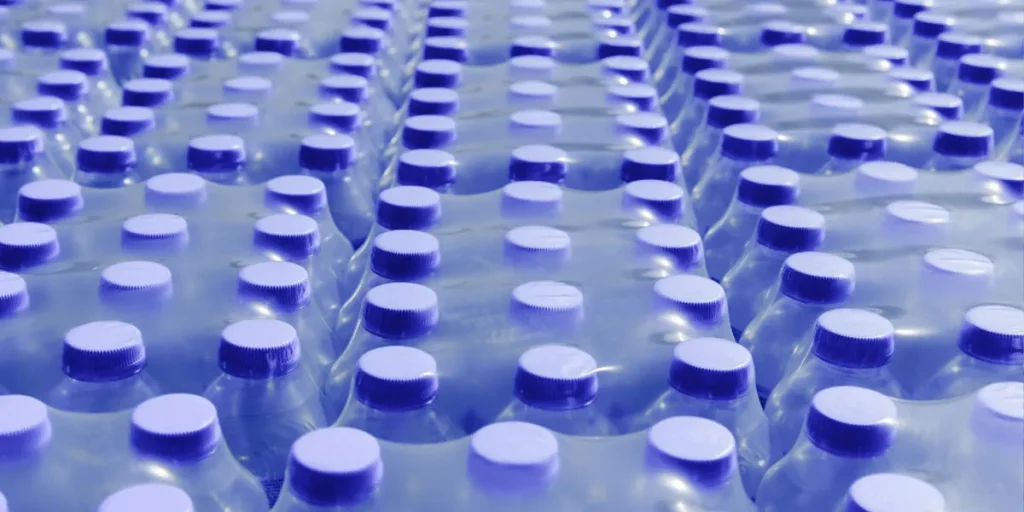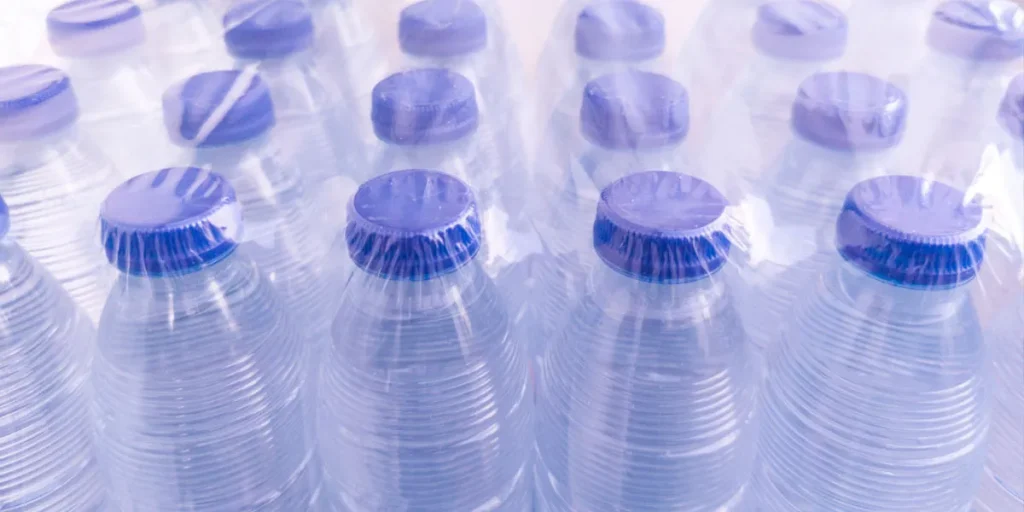A 35 pack of water, with each bottle weighing roughly 16.9 ounces, would total approximately 37 pounds. The weight can vary slightly depending on the brand and the material of the bottles.
Carrying water is essential for both daily hydration and emergency preparedness. We often buy water in bulk, with the 35-pack being a common choice for households and small offices.
Understanding the weight of such a pack is crucial for storage planning and transport considerations.
It also guides those who may face lifting restrictions or want to prevent strain during handling. Bulk water purchases save money and reduce the frequency of shopping trips, but it’s important to know the physical load involved.
Keep in mind that the indicated weight might not account for the packaging, so the actual weight you lift off the shelf could be slightly more.
Whether you’re restocking your home, preparing for an event, or managing inventory for a business, knowing the weight is key for efficient handling and storage.
The Basics Of Packaged Water Weight

Understanding the weight of a 35-pack of water is key when planning shopping trips, especially if carrying heavy items is a concern.
Knowing the basics of packaged water weight helps to estimate total load. This can influence both the purchase and transport of bulk water bottles.
Factors That Determine Water Bottle Weight
Several factors play into the total weight of a water bottle pack:
- Volume: The amount of water in each bottle.
- Material: Plastic, glass, or aluminum.
- Packaging: The weight of the cardboard or wrap.
- Extras: Caps, labels, and seals, which vary in weight.
All these factors must be considered to get an accurate total weight of a pack. This ensures no surprises when it’s time to lift.
Standard Sizes Of Water Bottles
Common water bottle sizes help predict weight. Most standard bottles are:
| Size (Fl oz) | Weight (lbs) |
|---|---|
| 16.9 (500 ml) | 1.04 |
| 33.8 (1 liter) | 2.20 |
For a 35-pack, multiply the single bottle weight by 35 to approximate the pack’s weight. A 16.9 fl oz bottle would result in a pack weight around 36.4 lbs, without packaging.
Calculating The Weight Of A 35 Pack
Are you planning to stock up on bottled water? Knowing the total weight can help with transportation and storage. Let’s figure out how much a 35 pack of water bottles might weigh.
Volume-to-weight Conversion
Water’s weight can be calculated if we know the volume. In the U.S., water is often measured in gallons. For other countries, liters might be more common.
One gallon of water weighs approximately 8.34 pounds, and one liter weighs around 2.20 pounds. The weight will vary based on the volume of each bottle in your 35 pack.
- 16.9 oz bottles: A single bottle weighs about 1.04 pounds (0.47 kg).
- 500 ml bottles: Each weighs roughly 1.10 pounds (0.50 kg).
Let’s use 16.9 oz bottles for this example:
| Bottle Volume | Weight per Bottle | Total Weight |
|---|---|---|
| 16.9 oz | 1.04 lbs | 36.4 lbs |
The weight for a 35 pack of 16.9 oz bottles could be around 36.4 pounds (16.52 kg).
Packaging Material Considerations
The total weight includes the packaging too. Cardboard can add up to 2 pounds whereas plastic wrap is lighter, at about 0.5 pounds.
For accurate results, add the packaging weight to the bottle weight:
- Determine the packaging type.
- Estimate the packaging weight.
- Add it to your total bottle weight.
For a cardboard-packed 35 pack:
Total weight might be 36.4 lbs for water, plus 2 lbs for packaging, equaling around 38.4 pounds.
Real-world Applications

An understanding of a 35 pack of water’s weight is crucial in diverse scenarios.
Professional event coordinators and logistics experts often tackle real-world applications of this knowledge to ensure smooth operations.
Event Planning And Water Supply
Ensuring guests stay hydrated is vital at any event. A 35 pack of water typically weighs around 29 pounds (13.15 kg).
Event planners use this figure to calculate the quantity needed for guests. This avoids water shortages during the event. With this estimation, planners can:
- Determine the amount of water needed based on the guest count.
- Calculate space requirements for water storage at the venue.
- Arrange adequate staff to distribute water efficiently.
Transportation And Storage Challenges
Handling heavy goods is always challenging. The weight of water packs influences transportation logistics.
Water packs must arrive in good condition and on time. Below are crucial points for managing these challenges:
| Challenge | Management Strategy |
|---|---|
| Vehicle Load | Choose vehicles that can handle the weight and calculate total load based on the number of water packs. |
| Space Utilization | Optimize storage space in vehicles and warehouses for effective transportation and storage. |
| Delivery Schedule | Develop a timeline that accounts for loading, transit, and unloading of water packs. |
By focusing on these strategies, transport and storage of 35 pack water bottles can be efficiently managed.
Proper planning ensures every event goes off without a hitch, and water is always available when needed.
Health And Hydration
Keeping our bodies properly hydrated is crucial for health and well-being. A 35 pack of water, which many might consider for convenience, can provide ample hydration.
Understanding how much this weighs is a step towards healthy water intake practices.
Daily Water Intake Recommendations
Doctors often say drinking water is key for our health. Different people need different amounts. Let’s break it down:
- Adult men should aim for about 3.7 liters a day.
- Adult women should target around 2.7 liters a day.
- For kids, it depends on their age and size.
A standard bottle in a 35 pack is usually 16.9 ounces. That’s about 500 milliliters. So, a whole pack can help several people meet their daily needs!
Benefits Of Staying Hydrated
Water does wonders for the body. Benefits include:
| Benefit | Description |
|---|---|
| Energy Levels | Keeps you energetic and alert. |
| Skin Health | Hydrated skin looks more vibrant. |
| Body Temperature | Regulates your body’s cooling system. |
| Digestion | Helps break down food correctly. |
| Joint Health | Lubricates and cushions your joints. |
Every system in your body relies on water. It’s the healthiest drink you can choose. Remember to carry water with you, especially when you’re active or it’s hot outside.
Environmental Impact
The environmental impact of a 35-pack of water goes far beyond its weight. These packs, common for hydration needs, raise significant environmental concerns.
The heavy footprint of bottled water use is more than just physical.
Single-use Plastics And Sustainability
Single-use plastics from bottled water create daunting challenges for ecosystems. These plastics often end up in landfills or oceans.
The result is harmful to wildlife and plant life. Consider these points:
- Millions of tons of plastic are discarded each year.
- Plastic bottles can take up to 1,000 years to decompose.
- Recycling rates cannot keep up with the high production of bottle waste.
Alternatives To Bottled Water
To mitigate the environmental toll, exploring alternatives to bottled water is key. Sustainable options include:
- Using reusable water bottles, which reduce waste significantly.
- Installing water filtration systems at home or in offices.
- Supporting local water infrastructure improvements for safer tap water.
- Choosing glass or aluminum packaging for better recyclability.
Each of these steps can assist in lessening the environmental burden of bottled water.
All these efforts lead to a healthier planet. They help reduce greenhouse gas emissions. They also conserve our valuable natural resources.
Most importantly, they help protect the earth for future generations.
FAQ About the Weight of a 35-Pack of Water
What’s The Average Weight Of A 35-pack Water Bottle?
A 35-pack of water bottles typically weighs around 29 pounds (13. 2 kg).
This includes the weight of the plastic packaging and assumes each bottle is 16. 9 ounces (500 ml) filled with water.
How Many Gallons In A 35-pack Water Bottle?
A 35-pack of 16. 9 ounce water bottles contains a total of approximately 4. 6 gallons of water.
This conversion is based on the fact that a gallon is 128 fluid ounces.
Can You Take A 35-pack Of Water On A Plane?
You cannot take a full 35-pack of water through airport security due to liquid restrictions. However, you can take an empty 35-pack container and refill it post-security or check it in with your luggage.
Is A 35-pack Of Water Cost-effective?
Buying water in bulk, like a 35-pack, is usually more cost-effective compared to individual bottles. The cost per ounce is typically lower, resulting in savings over time, especially for households with high water consumption.
Conclusion
Wrapping up, the weight of a 35-pack of water is a crucial detail for buyers and sellers alike. This information aids in logistics, from planning a simple grocery run to managing inventory. Remember, a standard 16. 9-ounce bottle tips the scale at about 1.
05 pounds, putting your pack at approximately 36. 75 pounds. Stay hydrated and lift safely!
Resources:
https://www.usgs.gov/special-topics/water-science-school/science/facts-about-water
https://www.gao.gov/water-quality-and-protection
